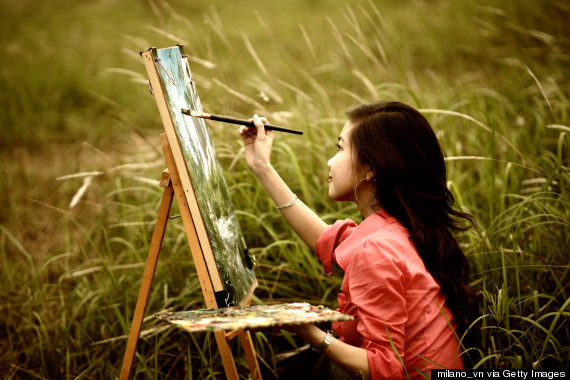
The appointment of Marjorie Scardino as the first female board member of Twitter resonates on so many levels -- sparking, for me, a year-end look-back at how women fared in 2013.
At Pen and Brush, we obviously focus keenly on the status of women in the visual and literary arts. But art is almost always a reflection of the times in which it is created, making it inseparable from business, science, politics and human rights in the world at large. Progress was made in many arenas this year, but how great was the ripple effect?
Lean In... Or Not?
Agree or disagree with her ideas, Sheryl Sandberg's bestselling book Lean In started a conversation about what women need to do to get ahead in corporate America. Ms. Sandberg was the first woman named to the board of Facebook, just over a year before Ms. Scardino was named to the Twitter board -- both amid increasing scrutiny over the absence of women on their boards, as their companies went public.
An abundance of social science statistics, as pointed out by the New York Times columnist, Nicholas Kristof, makes clear that gender diversity on boards makes for better decision making, and has a positive impact on the bottom line. Is this step in the right direction for Twitter and Facebook? Clearly, the answer is yes. However, one woman on a corporate board does not qualify as diversity. What's more, Sandberg's Lean In movement is not the remedy for inequality. The fact that men have co-opted the book's themes to form their own Lean In circles aside, Lean In eschews the collective power of women in favor of the individual. To achieve true equality, we must lift and support all women, by changing institutions.
Interestingly, both Facebook and Twitter also made headlines because their own platform's policies did not adequately address the posting of hate speech against women. To say that I was disappointed when Sandberg stayed silent on this issue -- instead of using her influential platform to speak out on the issue -- would be an understatement.
More Money, More Problems.
In the arts, during the cycle of high-end auctions this year, work from a small number of women artists achieved record sale prices and pushed their cumulative auction prices to new highs. So, what does this mean for the gender gap in the art world?
As the Executive Director of an organization that creates a platform for women in the arts, I applaud any and all achievements by women artists and writers. I also subscribe to the belief that the achievement of one, or only a handful of women, serves as a misleading proxy that only serves to mask a discouraging status quo. We want to see the day when women who create art -- at all levels -- have an equal opportunity to get it to the marketplace, and to make a reasonable living from it. It will take action by those who shape and influence the marketplace, as well as from women writers and artists, to make it happen.
Strength in Numbers.
In 2013, a great example of "force of numbers" was demonstrated by Makers, the documentary catalog of women whose achievements made and are making America. In addition to those few women who achieved national and international celebrity, were an abundance of women who broke barriers in occupations not normally recognized or celebrated, or often viewed as "women's work." What we want to recognize in these women, and in those who bring their work in the arts and letters to us, is that again and again, they make the case for merit -- not relying on their gender or seeking advantage because of their gender.
In the coming year, when Pen and Brush resumes activities in its new facility, programming will demonstrate there are enough women producing good work; there are enough women whose work shows diversity of subject and medium; and, there are enough women who work at the highest level of professionalism. We expect this programming to contradict misconceptions used to rationalize why women in the visual and literary arts are underrepresented and undervalued.
Looking Ahead.
Old Mistresses, a groundbreaking book from 1982 which offered a radical critique of Art History's sexism, was re-issued this year with a new preface that questions how much has really changed for women artists over the decades. In the arts, and elsewhere, we know that there is plenty of work to be done. In 2013, we saw many individual examples of triumph for women. We hope that before long, they will no longer be the exception, but rather, the rule.